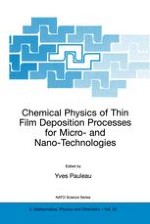An up-to-date collection of tutorial papers on the latest advances in the deposition and growth of thin films for micro and nano technologies. The emphasis is on fundamental aspects, principles and applications of deposition techniques used for the fabrication of micro and nano devices. The deposition of thin films is described, emphasising the gas phase and surface chemistry and its effects on the growth rates and properties of films. Gas-phase phenomena, surface chemistry, growth mechanisms and the modelling of deposition processes are thoroughly described and discussed to provide a clear understanding of the growth of thin films and microstructures via thermally activated, laser induced, photon assisted, ion beam assisted, and plasma enhanced vapour deposition processes.
A handbook for engineers and scientists and an introduction for students of microelectronics.
